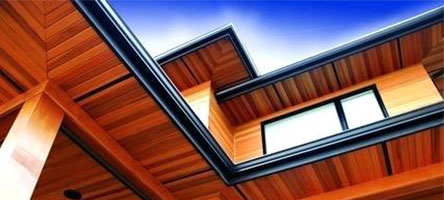
Insulation And Thermal Performance of Cedar
Welcome to the world of cedar, a tree that’s not just a pretty sight but also a useful player. In pursuing sustainable and efficient construction, exploring insulation and thermal performance properties within cedar has unveiled many insights. Think about it as nature teaming up with smart human ideas. Whether it’s old-style cabins or new green homes, cedar’s special heat-keeping capabilities are awesome. Let’s dive in and explore how cedar influences insulation across the home.
Cedar Siding
Asides from the aesthetics that cedar siding adds to a building’s appearance, it also acts as a robust thermal shield. Its natural structure forms air pockets that significantly reduce the heat transfer in a space, thereby increasing insulation.
With cedar siding, you can easily control your indoor temperature and lower the intensity at which you use your HVAC systems. This means you adequately save energy while reducing your carbon footprint.
This is what makes cedar siding an excellent material for homes. It nails eco-friendliness and budget-savings.
Trim, Soffits, and Fascia
Cedar trim, Soffits, and Fascia are some of the most underestimated parts of the building structure. Most people don’t know that these structural components are vital for optimizing a building’s energy performance.
When properly installed, they are great at sealing gaps and stopping air leakage around the roofing structure. They also help bolster the structure’s thermal envelope.
That’s still not all. They help heighten energy efficiency by removing drafts and limiting heat loss. Beyond functionality, they also nail it in terms of aesthetics.
Properly installed trims, soffits, and fascia can bestow a level of elegance and refinement that is enough to lift the aesthetic appeal of a building.
Paneling and Ceiling Paneling
Cedar paneling and ceiling paneling aren’t just about style – they’re excellent insulation materials too. Cedar’s low thermal ability stops heat movement and makes your places cozy while helping you to conserve.
Add cedar paneling to walls or ceilings, and watch as insulation gets a boost, as it significantly cuts heat exchange. This dynamic helps to increase energy efficiency and creates a warm, inviting vibe that occupants will relish in their homes.
Timbers and Wainscoting
Cedar timbers and wainscoting also offer more than aesthetic appeal. They also provide structure. They’re natural insulators that help to boost energy efficiency and regulate internal temperature for better ambiance.
This is possible because Cedar’s low thermal conductivity and high resistance effectively stop heat transfer. Meanwhile, cedar wainscoting adds an extra insulating layer to walls which helps to maintain indoor temperatures.
With cedar timbers and wainscoting, you’re creating an energy-smart and thermally comfortable space.
Sustainability and Environmental Benefits
Besides its incredible insulating abilities, cedar is an eco-friendly choice. It is sourced responsibly from renewable forests. Therefore, opting for cedar supports a lower carbon footprint, as it needs minimal processing. By picking cedar for insulation, you’re boosting energy efficiency and nurturing a greener future.
The cedar’s thermal performance capabilities are some of the awesome factors to consider when deciding on your building components. From siding to paneling, ceiling paneling, trim, soffits, fascia, timbers, and wainscoting, cedar’s impact on energy efficiency is undeniable.
These applications create spaces that are not only visually stunning but also comfortably insulated. By integrating cedar into your projects, you’re making a sustainable choice that aligns with eco-conscious values while embracing style.
Experience the best of form and function with Longhouse Cedar’s custom-cut products. Elevate your space with the insulating power and elegance of cedar. Contact us at 1-250-248-5887 to get started.
